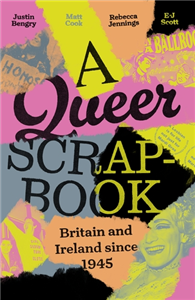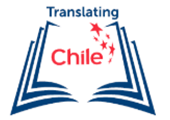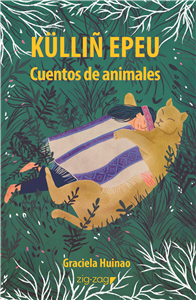Your Search Results
-
Mediendesign Dr. Georg Hauptfeld GmbH Edition Konturen
We are publishing book about the central questions of our culture in politics, philosophy, art and history.
View Rights Portal
-
Promoted ContentApril 1970
Theoretische Untersuchungen zum mikro- und makroökonomischen Kreditangebot.
Ein Beitrag zur Wirtschaftstheorie.
by Kartsaklis, Georg A. B.
-
Promoted ContentChildren's & YA
A oficina do Cambeva (Cambeva's workshop)
by Lido Loschi
Cambeva's workshop is the first of four books of the collection "Presente de Vô" in partnership with Grupo Ponto de Partida. The book is a mixture of colours and elements that highlight the memory of the world, in which seekers of memories have the mission of bringing light and life to objects found in the travels of two characters: Zalém and Calunga. Cambeva is a restorer who, when the world lost its embrace, tried to reinvent it; he is the grandfather who mends dreams, forgotten things and lost emotions, to whom the seekers ask for help to fix something. In a magical universe, full of children, grandchildren, stories and memories of his lineage of restorers, when faced with this request for restoration, he makes room to bring back an emblematic figure who can no longer sing. A story about memories, care and affection...
-
 Trusted Partner
Children's & YAOctober 2021
Trusted Partner
Children's & YAOctober 2021The Lost Smile
by Nadia L. King / Nelli Aghekyan
When Zaytoon wakes up feeling sad, she goes on a search to find her smile. From the kitchen to the garden, Zaytoon searches high and low,and eventually discovers her smile — it’s smiling at her from her reflection in the window! The Lost Smile is beautifully illustrated colourful picture book that demonstrates the importance of accepting our emotions. Zaytoon’s journey shows children it’s okay to be sad and reassures young readers that sadness can be temporary. Themes include cultural diversity, emotional intelligence, family life and the importance of connecting with nature and animals.
-
 Trusted Partner
Children's & YA
Trusted Partner
Children's & YACastelos de areia (Sand castles)
by Márcia Leite
Humans, who hold the power and exercise it for their own benefit, do not see the other beings of that universe. The invisibility and the political and social relations of micro and macro powers are intertwined in the maximum of coexistence and coexistence between different beings in a common territory.
-
 Trusted Partner
Children's & YA
Trusted Partner
Children's & YAO sumiço do tatu (The disappearance of the armadillo)
by Marília Moreira
Haroldo, a minho, who as he relates to other animals in the garden brings to light issues such as friendship and respect, mixing a harmonic field with an inside-out view of the garden of a house inhabited by some strange animals, among them the (human) balance-beast.
-
 Trusted Partner
Children's & YAMarch 2020
Trusted Partner
Children's & YAMarch 2020Amelie Trott and the Earth Watchers
by Moyra Irving
This is the extraordinary story of how one small girl stopped a planetary catastrophe. It’s a very timely book, written for the child in us all, with a forceful message about the power of young people to transform the world - a theme currently demonstrated by brave young heroes like Greta Thunberg. And with magical synchronicity, the very week Greta began her lone vigil outside the Swedish government last year, over 1,000 miles (1,897 km) away in the fictional world of books, Amelie Trott took to Parliament Square, London - on a mission to avert the End of the World. It’s a family drama with an international feel - set mainly in England but with episodes in Washington DC and around the world.
-
 Trusted Partner
Children's & YASeptember 2020
Trusted Partner
Children's & YASeptember 2020How Hope Became an Activist
by George M. Johnson / Danielle Grandi
What is an activist? Why do we need them? Join Hope as she discovers how to make positive change on issues that matter from clothes made in fair trade to refugee aid -and to have fun at the same time! Even if you are small you can still stand tall and help out to make the world a better place for all. How Hope Became an Activist is the first in a series on how kids from diverse backgrounds have joined with friends to take action on a range of issues from saving bees to helping in a food bank.
-
 Trusted Partner
2024
Trusted Partner
2024A Fire Within and Other Stories
by Kristine Ong Muslim, Lilian Akampurira Aujo, Tahar Ben Jelloun, Lubnah Abdulhalim, Nnamdi Oguike, Heran Abate, Muthoni Muchemi, Farai Mudzingwa, Hellena Rial Isaac, MG Vassanji, Hassan Ghedi Santur, Muna Ahmed Omer, A. Igoni Barrett
A Fire Within and Other Stories showcases award-winning African authors addressing crucial continental issues through compelling short stories. Set across various African countries, the anthology explores topics like women's leadership, early marriage, corruption, and climate change. It uniquely pairs each story with discussion prompts, encouraging readers to engage deeply with Africa's social, political, and economic challenges.
-
 Trusted Partner
Children's & YANovember 2019
Trusted Partner
Children's & YANovember 2019Claire Malone Changes the World
by Nadia L. King / Alisa Knatko
Swedish schoolgirl, Greta Thunberg has captured the world’s attention as she campaigns to raise awareness of climate change and calls world leaders to account. All children can follow Greta’s lead. Claire Malone is the hero of Claire Malone Changes the World, a feisty character with boundless energy to change her world for the better. Armed with her typewriter and the determination to make a difference, Claire is an ordinary kid with an extraordinary desire to change things for the better. Writing letter after letter, Claire advocates for change. One day she notices that her local park needs upgrading and she commits wholeheartedly to the cause. This an empowering and inspiring picture book for young children but especially for girls. You will love the journey of Claire, a strong and ambitious girl, so much that you will want to read this book over and over again.
-
 Trusted Partner
Science & MathematicsOctober 2017
Trusted Partner
Science & MathematicsOctober 2017UV-B Radiation and Plant Life
Molecular Biology to Ecology
by Brian R Jordan, Pedro J. Aphalo, Amy T. Austin, Carlos L. Ballaré, Paul W. Barnes, Susanne Baldermann, Melanie Binkert, Janet F. Bornman, Isabelle N. Bottger, Stephan D. Flint, Franziska S. Hanschen, Éva Hideg, Marcel A K Jansen, Gareth I. Jenkins, Karel Klem, Susanne Neugart, Monika Schreiner, Åke Strid, Mark A. Tobler, Roman Ulm, Otmar Urban, Jason Wargent, Melanie Wiesner
Ultraviolet-B radiation (UV-B) has profound effects on plant growth and development, and exposure varies with ozone depletion and across geographic regions, with ecosystem and agricultural consequences. This book deals with large-scale impacts but also how UV-B affects plants at the molecular level is also fascinating, and the UV-B photoreceptor has only recently been characterised. While UV-B radiation can be damaging, it also has a more positive role in plant photomorphogenesis. Consequently UV-B treatments are being developed as innovative approaches to improve horticulture. This book is a timely synthesis of what we know and need to know about UV-B radiation and plants.
-
 Trusted Partner
Children's & YAJanuary 2021
Trusted Partner
Children's & YAJanuary 2021Li, Miss Bee and the Honey Rocket
by Robert Austin / Alina Everatt
Miss Bee and her friends are as busy as bees, because they are planning an extraordinary trip! They thought, designed, worked hard, and a little harder for a little longer… until they finally got everything they needed. They used every single help they can find to embark on an incredible journey; would you like to join them? A marvellous story of a little girl wanting to visit outer space, Miss Bee is intriguing as it is amusing. With its dynamic tone and alluring illustrations, Miss Bee’s story will keep your child’s attention until the very end
-
 Trusted Partner
Literature & Literary StudiesSeptember 2014
Trusted Partner
Literature & Literary StudiesSeptember 2014A concordance to the rhymes of The Faerie Queene
by Richard Brown, J. B. Lethbridge, J. B. Lethbridge
This book is the first ever concordance to the rhymes of Spenser's epic. It gives the reader unparalleled access to the formal nuts and bolts of this massive poem: the rhymes which he used to structure its intricate stanzas. As well as the main concordance to the rhymes, the volume features a wealth of ancillary materials, which will be of value to both professional Spenserians and students, including distribution lists and an alphabetical listing of all the words in The Faerie Queene. The volume breaks new ground by including two studies by Richard Danson Brown and J. B. Lethbridge, so that the reader is given provocative analyses alongside the raw data about Spenser as a rhymer. Brown considers the reception of rhyme, theoretical models and how Spenser's rhymes may be reading for meaning. Lethbridge in contrast discusses the formulaic and rhetorical character of the rhymes. ;
-
 Trusted Partner
Literature & Literary StudiesJanuary 2021
Trusted Partner
Literature & Literary StudiesJanuary 2021A concordance to the rhymes of The Faerie Queene
by Richard Danson Brown, J. B. Lethbridge, J. B. Lethbridge
This book is the first ever concordance to the rhymes of Spenser's epic. It gives the reader unparalleled access to the formal nuts and bolts of this massive poem: the rhymes which he used to structure its intricate stanzas. As well as the main concordance to the rhymes, the volume features a wealth of ancillary materials, which will be of value to both professional Spenserians and students, including distribution lists and an alphabetical listing of all the words in The Faerie Queene. The volume breaks new ground by including two studies by Richard Danson Brown and J. B. Lethbridge, so that the reader is given provocative analyses alongside the raw data about Spenser as a rhymer. Brown considers the reception of rhyme, theoretical models and how Spenser's rhymes may be reading for meaning. Lethbridge in contrast discusses the formulaic and rhetorical character of the rhymes.
-
 Trusted Partner
Children's & YAJune 2020
Trusted Partner
Children's & YAJune 2020Two Tortoises in the Forest
by Bahar Sener / Gabriela Vagnoli
Regardless of their reactions, all children are beautiful and deserve respect and care. They sometimes misbehave, in fact this may even go as far as peer bullying. In this book, you will see how this kind of behaviours can be transformed and open the way for a good friendship when children are treated with love. Children and adults alike have so much to learn from those intelligent, wise tortoises who are famous for acting slowly but surely.
-
 Trusted Partner
Technology, Engineering & AgricultureSeptember 2018
Trusted Partner
Technology, Engineering & AgricultureSeptember 2018A History of Pesticides
by Graham A Matthews
In this fascinating book, Graham Matthews takes the reader through the history of the development and use of chemicals for control of pests, weeds, and vectors of disease. Prior to 1900 only a few chemicals had been employed as pesticides but in the early 1940s, as the Second World War raged, the insecticide DDT and the herbicide 2-4-D were developed. These changed everything. Since then, farmers have been using a growing list of insecticides, herbicides and fungicides to protect their crops. Their use has undoubtedly led to significant gains in agricultural production and reduction in disease transmission, but also to major problems: health concerns for both users of pesticides and the general public, the emergence of resistance in pest populations, and environmental problems. The book examines the development of legislation designed to control and restrict the use of pesticides, the emergence of Integrated Pest Management (IPM) and the use of biological control agents as part of policy to protect the environment and encourage the sustainable use of pesticides. Finally, the use of new technologies in pest control are discussed including the use of genetic modification, targeted pesticide application and use of drones, alongside basic requirements for IPM such as crop rotations, close seasons and adoption of plant varieties with resistance to pests and diseases.
-
 Trusted Partner
Humanities & Social SciencesJanuary 2026
Trusted Partner
Humanities & Social SciencesJanuary 2026A queer scrapbook
Britain and Ireland since 1945
by Justin Bengry, Matt Cook, Rebecca Jennings, E-J Scott
A beautifully illustrated compendium of LGBTIQ+ life. A queer scrapbook offers a treasure trove of LGBTIQ+ histories from across Britain and Ireland. Packed with materials, from interviews and newspaper articles to photographs and flyers, the book explores urban, rural and regional queer life since 1945. Commentaries and short essays introduce a changing queer landscape, spotlighting four broad themes: home and family, sex and socialising, arts and culture and politics and activism. The book delves into the meaning and experiences of domesticity and parenting and explores the sometimes unexpected places LGBTIQ+ people met to have fun. It examines the importance of creative work in forming community and identity and shows how people fought injustice and advocated for equal rights. Collecting has been a way for the marginalised to explore and assert identity and community. A queer scrapbook vividly illustrates the diversity of queer and trans lives across the British and Irish isles since the Second World War.
-
 Trusted Partner
Traditional stories (Children's/YA)2024
Trusted Partner
Traditional stories (Children's/YA)2024Külliñ Epeu. Animal´s tales
by Graciela Huinao
Graciela Huinao, a Mapuche-Williche poet and storyteller, presents in this anthology four epeu (tales) from the oral tradition of her ancestral people. Within the genre of epeu, she explains, there is a branch that leads us directly into the world of animals: the külliñ epeu, a particular form of storytelling that shares some aspects with fables, but which deserves its own place within literary classifications.
-
 Trusted Partner
March 2024
Trusted Partner
March 2024Born Hutsi
by Fiston Mudacumura
The author was raised in a family of only survivors from the 1994 Genocide against the Tutsis. Even FARG (A survivors fund) allegedly paid for his school fees for some time. Through FARG reform, he learned that his father had associated with perpetrators even if he was also killed in 1994. Digesting that information as a teenager was not easy. In this book, you read about his other close-to-normal upbringing like infatuation, sex advice from fellow teenagers, getting conned in Paris and arrested on his first trip to France, his take from the "Ndi umunyarwanda" campaign, #PK saving him from getting expelled at the university, joining a political party at the university,...
-
 Trusted Partner
May 2025
Trusted Partner
May 2025Nematode Disease Complexes in Agricultural Crops
by Mujeebur Rahman Khan, Mujeebur Rahman Khan, Horacio D. Lopez-Nicora, Edgard Henrique Costa Silva, Giada d'Errico, Dominick Padilla, Bala Rathinasabapathi, Abdou Lahat Mbaye, Aliou Moussa Diouf, Zineb Richad, Zineb Belabess, Mustapha Barakate, Rachid Lahlali, Abolfazl Hajihassani, Shabeg S. Briar, Dayani Withanage, George W. Bird, Guiping Yan, Frank Kagoda, Ziaul Haque, Mahfouz M M Abd-Elgawad, Carla Pimentel, Natsumi Kanzaki, B. B. Westerdahl, Deliang Peng, Ebrahim Shokoohi, Zafar A. Handoo, Tanveer Fatima Rizvi, Irfan Ahmad, Milad Rashidifard, Sunil Singh, Gerhard du Preez, Samad Ashrafi, Gregory C. Bernard, Awol Seid, Yao A. Kolombia, M. Shahid Anwar Ansari, Rizwan Ali Ansari, Marceline Egnin, Conard Bonsi
Plant diseases where more than one pathogen is involved in the infection process are commonly termed as "complex" since their diagnosis and subsequent control are more complicated. A disease complex is produced through a synergistic interaction between two organisms, such as plant nematodes and soil-borne fungi or bacteria. Interactions between nematodes and other pathogens are found on a range of agricultural crops globally. Economically, disease complexes are important because the sum of the damage is greater than the effect of the two organisms causing disease independently. Equally, some diseases (e.g. Verticillium wilt) become more aggressive when nematodes are present, even if the inoculum density is low. Plant nematodes can also act as vectors and carry fungi and bacteria to the susceptible tissue or introduce viruses into the host plant. Overall, the development of a disease complex is influenced by several factors such as the engaged pathogens, their mutual relationship and time of invasion, the host plant species and the prevailing environment. Nematode Disease Complexes discusses the different roles that plant nematodes play in the formation of a disease complex. It provides an account of the agricultural significance, aetiology and epidemiology of important disease complexes and their management strategies based on integration of conventional, current and innovative approaches.
-
 Trusted Partner
The ArtsDecember 2022
Trusted Partner
The ArtsDecember 2022D. W. Griffith's The Birth of a Nation
by Jenny Barrett, Douglas Field, Ian Scott

































